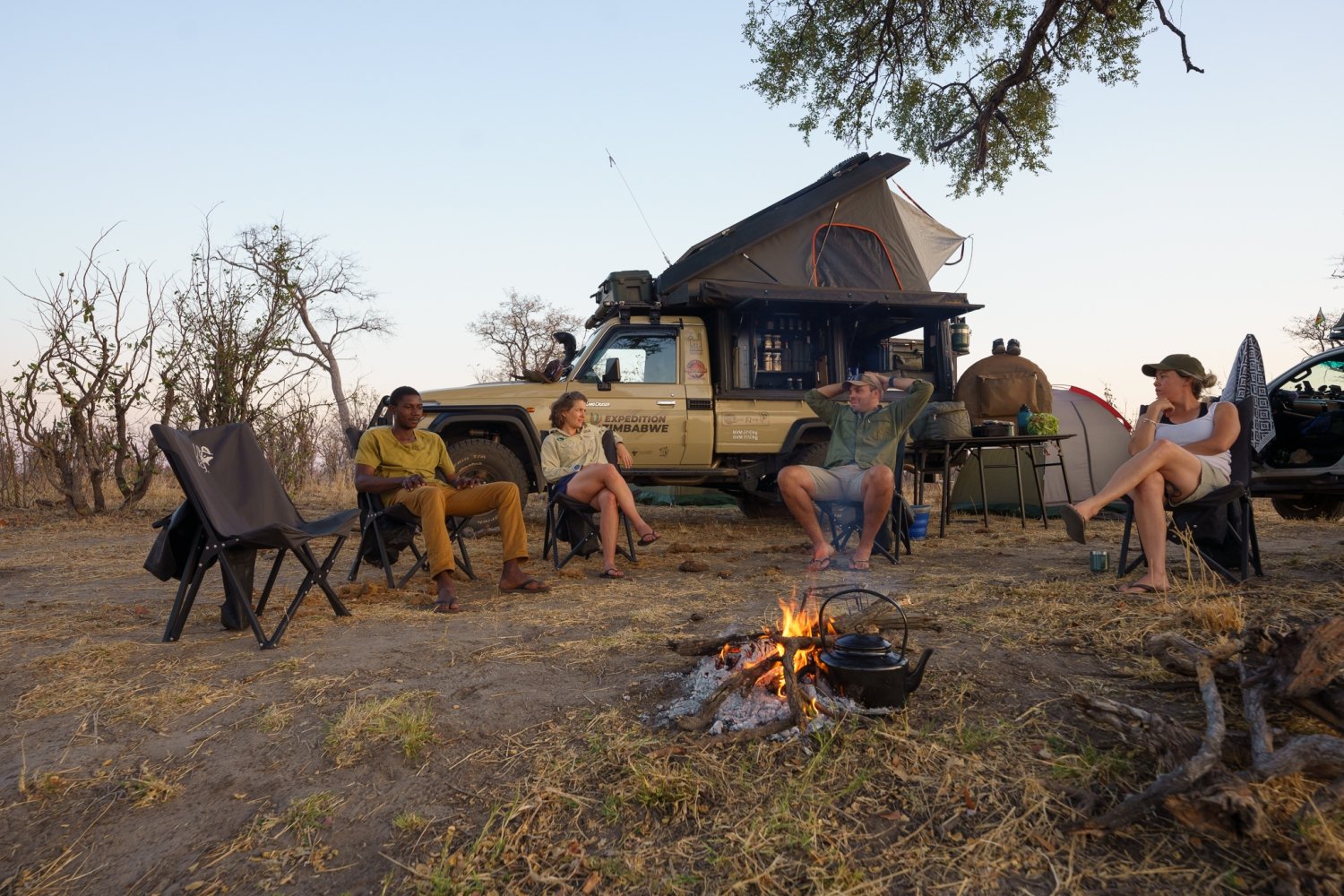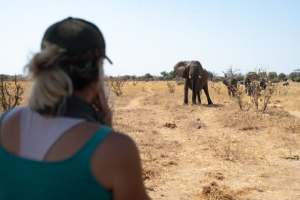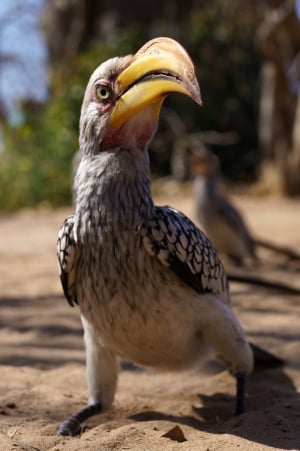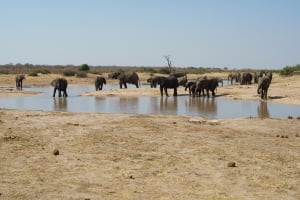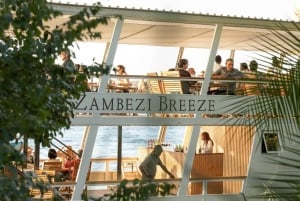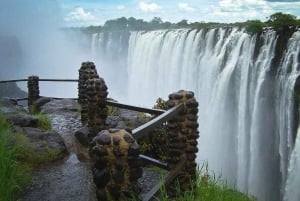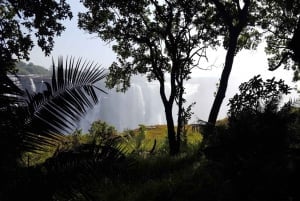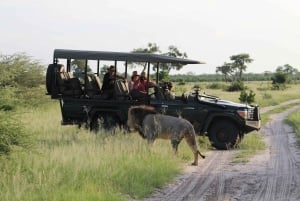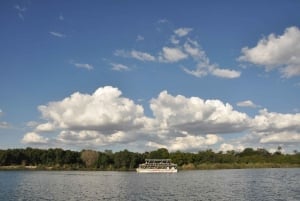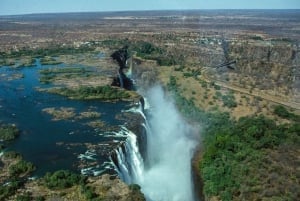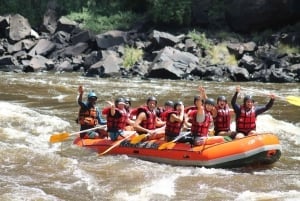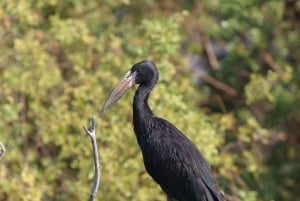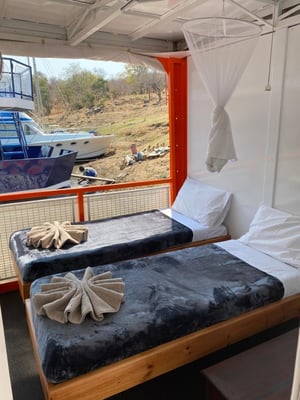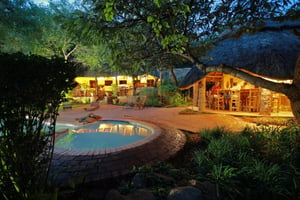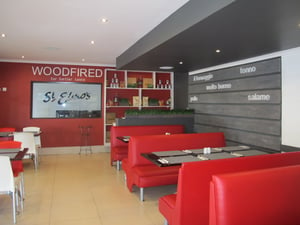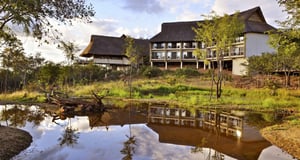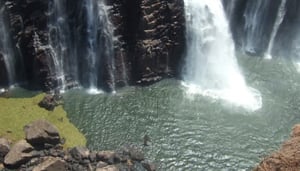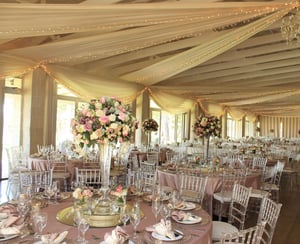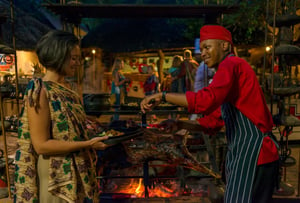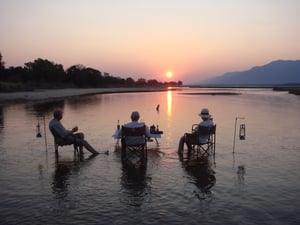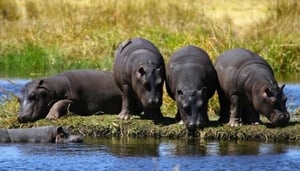Driving Through Hwange National Park
Book Top Experiences and Tours in Zimbabwe:
If youʻre booking your trip to Zimbabwe last minute, we have you covered. Below are some of the top tours and experiences!- Victoria Falls: Dinner Cruise on the Zambezi River
- From Kasane: Victoria Falls Day Trip (Zimbabwe side)
- Victoria Falls: Guided Walking Tour
- Chobe Day Trip from Victoria Falls, Zimbabwe
- Victoria Falls: Zambezi River Sunset Cruise
Another visitor’s vehicle came up behind us. We had had our time with lionesses and it was only polite to move on and give the newcomers a turn. As the two vehicles in our party were pulling away, a game-drive vehicle full of what looked like sunburnt, tired tourists was coming toward us. Word of the lethargic lions' whereabouts had obviously got out. We were in the Robins area having stopped at the camp for a quick lunch, squirrel spotting, and a bit of a WIFI fix. I’ll admit, right then I did think ‘oh yes, here we go, another vehicle and I wonder how many more we’ll come across; I also thought, ‘if we’ve had lions in our first 30 mins, Hwange is going to be prolific with sightings.’
One. We came across one other vehicle, a vehicle on patrol belonging to Parks. That was at the end of day one.
Hwange National Park is 14 651km2. It is huge and we had four days to drive from the northwest to the south. We drove and we drove and we drove. From within the climate-controlled interior, we watched as the soils changed from fine-white dust to plum-black clay to rich-okra loam. Stunted mopane scrub turned to thick Jesse bush that clawed at the sides of the cars, beautiful towering Teak forests gave way to groves of adult Cathedral Mopane with branches that twirled and swirled like the finest Japanese ink calligraphy.
We drove past countless pans. Dry pans, deep pumped pans, muddy fouled pans, pans with a single pool - all with a bomb-blast perimeter detonated by trunks, chests, feet, and tusks of the park’s give-or-take 50 000 elephants. The three nights and four days we were in Hwange we did see lots of elephants, and a few zebra, and quickly caught sight of a handful of other species - an eland bull, roan (two roan bulls in two different pans, and a breeding herd in another), impala. Some nice birds - Black Bellied Bustard, Red-Crested Korhaan, Bradfield’s hornbill, Secretarybirds on the hunt, Crimson-breasted Shrike, White-headed Vulture to name a few.
Our route took us through the remote, least visited southern area of the park down roads that had returned to paths. Our mood, like the landscape, flattened. We drove too much and simply sat and watched too little. There was too much ground to cover in too short a time. Lesson learned; venture in a little and stay still. Hwange is too big, there’s too much to see and feel. You can’t. You’ll miss it from within your climate-controlled interior and then you won't have any stories to tell.


